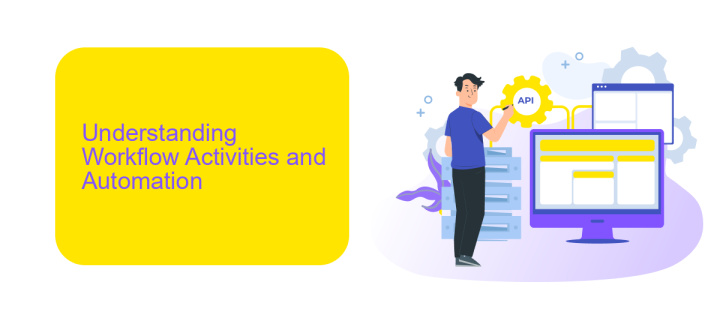Workflow Activities and Automation Safe
In today's fast-paced business environment, efficient workflow activities and automation are paramount for maintaining safety and productivity. This article delves into the integration of automated systems within various industries, highlighting best practices and key strategies to ensure seamless operations. Discover how leveraging technology can not only streamline processes but also enhance safety measures, ultimately driving organizational success.
Introduction
Workflow activities and automation play a crucial role in optimizing business processes, enhancing productivity, and ensuring operational efficiency. As organizations strive to stay competitive, the implementation of automated workflows becomes increasingly essential. Automation not only reduces manual errors but also streamlines repetitive tasks, allowing employees to focus on more strategic activities.
- Improved efficiency through reduced manual intervention
- Enhanced accuracy and consistency in task execution
- Increased productivity by freeing up employee time
- Better compliance with standardized processes
One of the key aspects of successful workflow automation is the integration of various tools and systems. Services like ApiX-Drive facilitate seamless integration, enabling businesses to connect different applications effortlessly. By automating data transfer and synchronization between platforms, ApiX-Drive helps organizations build cohesive and efficient workflows, ultimately driving better business outcomes.
Understanding Workflow Activities and Automation

Workflow activities are the backbone of any automated process, enabling tasks to be executed systematically and efficiently. These activities can range from simple actions like sending an email to more complex operations such as data synchronization between different systems. By defining a clear sequence of activities, organizations can ensure that processes are carried out consistently, reducing the risk of errors and improving overall productivity. Automation tools play a crucial role in managing these workflows, allowing for the seamless execution of tasks without human intervention.
Automation becomes even more powerful when integrated with various services and applications. Tools like ApiX-Drive facilitate this by providing a platform for easy integration between different systems. With ApiX-Drive, users can automate data transfers, synchronize information across platforms, and trigger actions based on specific events. This not only streamlines operations but also ensures that all systems are up-to-date and working in harmony. By leveraging such tools, businesses can focus on strategic activities while the automated workflows handle routine tasks efficiently.
Benefits of Using Workflow Activities and Automation

Implementing workflow activities and automation can significantly enhance the efficiency and reliability of business processes. By automating repetitive tasks, organizations can free up valuable time and resources, allowing employees to focus on more strategic activities.
- Increased Efficiency: Automation reduces the time required to complete tasks, leading to faster turnaround times and improved productivity.
- Error Reduction: Automated processes minimize human errors, ensuring higher accuracy and consistency in task execution.
- Cost Savings: By streamlining operations, businesses can reduce labor costs and operational expenses.
- Scalability: Automated workflows can easily scale to accommodate growing business needs without additional manual intervention.
- Enhanced Integration: Tools like ApiX-Drive facilitate seamless integration between different systems, ensuring smooth data flow and coordination across platforms.
Overall, leveraging workflow activities and automation not only optimizes operational efficiency but also provides a competitive edge in the marketplace. With the help of integration services like ApiX-Drive, businesses can achieve a higher level of synchronization and functionality, driving growth and innovation.
Challenges in Implementing Workflow Activities and Automation

Implementing workflow activities and automation within an organization can present several challenges. One of the primary obstacles is the integration of various systems and software platforms. Ensuring seamless communication between disparate systems requires careful planning and execution.
Another significant challenge is resistance to change from employees. Introducing new automated processes can be met with skepticism and reluctance, particularly if staff members are accustomed to manual methods. Proper training and communication are essential to mitigate this resistance.
- Integration complexity
- Employee resistance
- Data security concerns
- High initial costs
To address integration challenges, services like ApiX-Drive can be invaluable. ApiX-Drive simplifies the process of connecting different systems, enabling smooth data flow and reducing the technical burden on IT departments. By leveraging such tools, organizations can more effectively implement automated workflows, ultimately enhancing efficiency and productivity.


Best Practices for Workflow Activities and Automation
To ensure efficient workflow activities and automation, it is crucial to start with a clear understanding of your processes. Map out each step of your workflow and identify areas that can benefit from automation. Prioritize tasks that are repetitive and time-consuming, as these are prime candidates for automation. Always test automated processes in a controlled environment before full implementation to avoid disruptions and ensure they function as intended.
Integrating various tools and services can significantly enhance your workflow automation. Utilize platforms like ApiX-Drive to seamlessly connect different applications and automate data transfers between them. This not only saves time but also reduces the risk of human error. Regularly review and update your automated workflows to adapt to any changes in your processes or tools. Additionally, maintain clear documentation of all automated activities to facilitate troubleshooting and future enhancements.
FAQ
What is workflow automation?
How can I ensure the security of automated workflows?
What are the benefits of using workflow automation?
How can I integrate different applications into my automated workflows?
What types of tasks can be automated in a workflow?
Time is the most valuable resource for business today. Almost half of it is wasted on routine tasks. Your employees are constantly forced to perform monotonous tasks that are difficult to classify as important and specialized. You can leave everything as it is by hiring additional employees, or you can automate most of the business processes using the ApiX-Drive online connector to get rid of unnecessary time and money expenses once and for all. The choice is yours!

